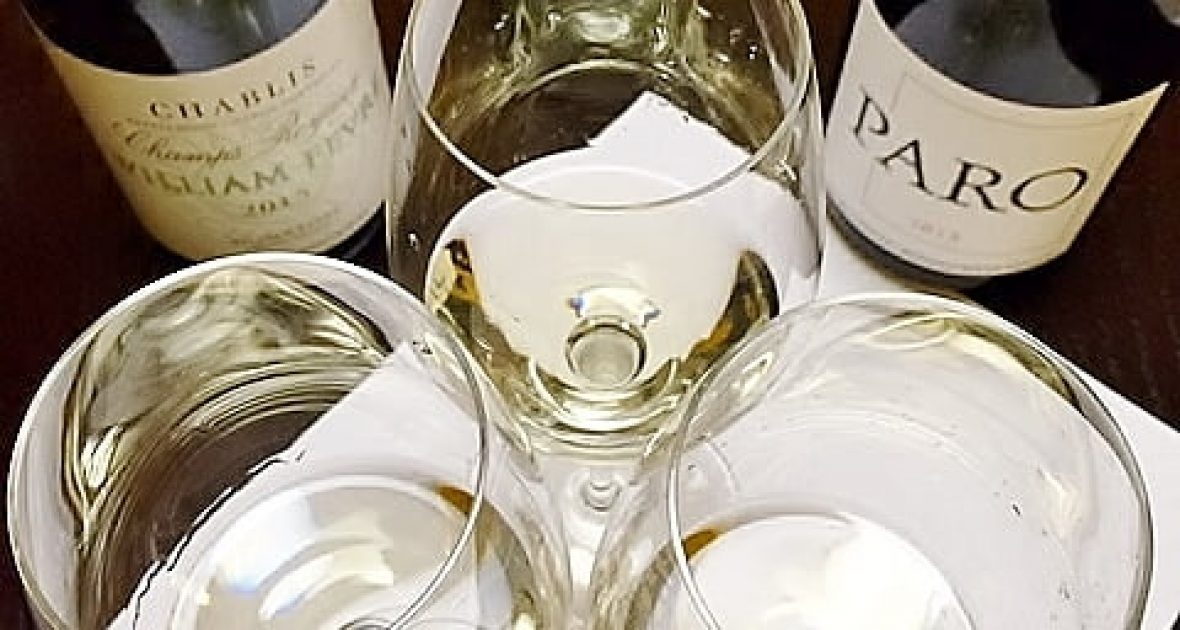Chardonnay is the lady who’s seen it all. She’s been dressed up and stripped down, revered and reviled, but at her core she’s pretty simple and just wants to be loved.
From the “cougar juice” crowd to the “ABC” (Anything But Chardonnay) mob, Chardonnay has been stretched and twisted to the limits of—and sometimes beyond—what it can take. And to be fair, Chardonnay is one of the hardiest white grapes out there: it can take on massive amounts of new oak, a special extra fermentation usually reserved only for red grapes, a thousand different soil types and climates, and in rare circumstances when all the right factors come together, it can last a lifetime. But what’s really at the heart of this ubiquitous grape?
There was a time in our not-so-distant past when “Chardonnay” was synonymous with “white wine.” If you were a white wine drinker, there was hardly any other choice! (Thanks, Australia.) Most people didn’t associate the word with the particular grape variety or a place or style—they just knew they liked it. Starting in the 1970s and catapulting its way through the millennium, Chardonnay became not just a popular wine, but also a brand. But with time, changing fashions, and a growing awareness of what was in people’s glasses, Chardonnay’s lofty pedestal slowly began to crumble. Sometimes pop culture was the culprit—remember Bridget Jones’ Diary? That movie had the same effect on Chardonnay in Britain that Sideways had on Merlot in the U.S. Other times it was just that Chardonnay had grown too big for its britches, and the masses simply began to grow tired of its big, boozy, buttery, and rather one-noted nature.

In all reality, Chardonnay has a thousand different faces. Do you like white Burgundy? Can’t get enough of Champagne? Enjoy the eye-popping acidity of fresh, crispy Chablis? Then give it up for Chardonnay—the grape that looks good in anything.
Structurally, Chardonnay is pretty ordinary all the way through. It has medium acidity, medium alcohol, a medium body… it’s just so basic, as the kids say. But that is exactly what makes it so unique! It’s one of the most malleable, flexible, and easiest-to-grow grapes that winemakers have to work with. It very easily takes on the characteristics of where it’s grown, as well as the winemaking choices the vintner puts on it. If soil, climate, elevation, malolactic fermentation, wood aging, and lees stirring are the colors to use (just to name a few important components and techniques for making wine), then Chardonnay is the canvas itself. It’s a blank page, ready to take on the whims and fancies of whoever works with it. This is exactly the reason why some people hate it, some love it, and some have their mouths hanging wide open as they ask, “This is Chardonnay?!” As the illustrious English wine writer Jancis Robinson stated, Chardonnay is “equally capable of extreme mediocrity and regal splendour.”
So grab your glasses, your fruit bowl, and a group of your most stubborn friends. We’re going to peel off the layers of this grape and really get to know the “real Chardonnay.” This is the perfect grape to deconstruct! Read on to dig into the three stars of this show.
